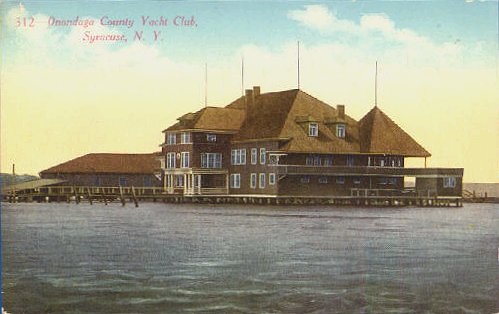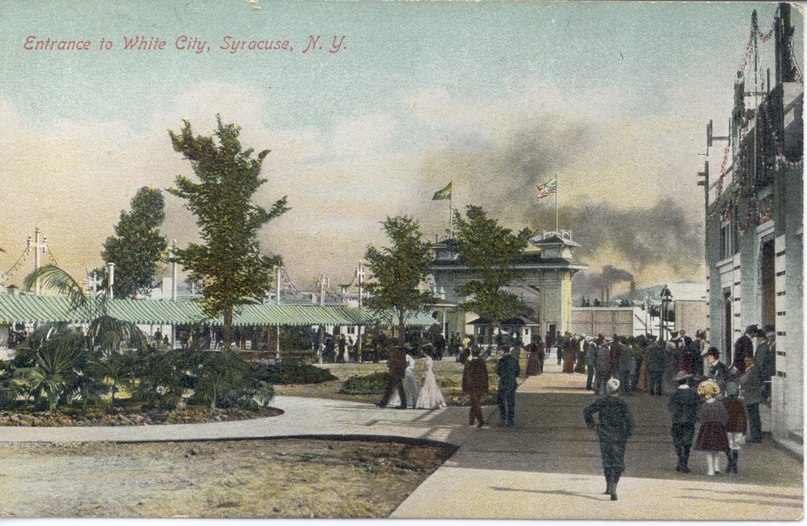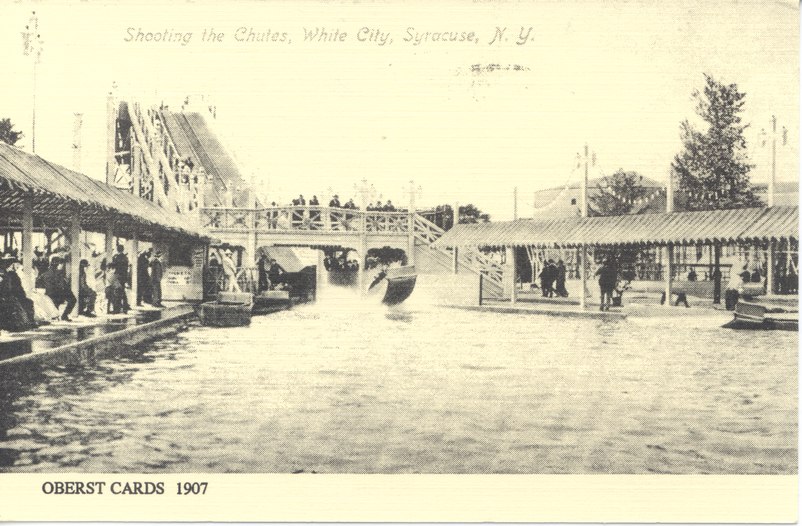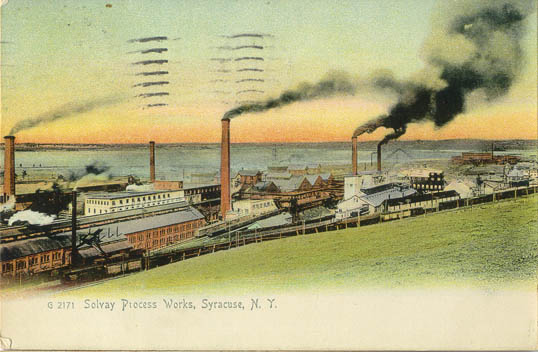Onondaga Lake |
|
|
|
Before the American Revolution, the hills surrounding Onondaga Lake were the center of the Iroquois Confederacy. During the late 17th and early 18th century, European settlers, mostly trappers and traders, followed Jesuit missionaries and French explorers to the area. Onondaga Lake, its creeks, and rivers served as transportation routes. When the Erie Canal was built in the early 1800s, it opened the interior of New York State to new settlement. Many were attracted to Syracuse by its developing salt industry. In the early 19th century, the lake's outlet was dredged to lower the water level and drain wetlands that have since become the northern end of downtown Syracuse. By 1900, the shoreline of Onondaga Lake was dotted with major tourist attractions including hotels, restaurants, amusement parks and seven resorts. At that time, fish from Onondaga Lake were served at restaurants around New York State. Lakeview Point was the first resort built in 1872. In 1906 it made way for the White City amusement park, built by the Syracuse, Lakeshore and Northern trolley company. By the end of the 1890s, the Syracuse, Lakeshore and Northern Railway provided a busy trolley schedule, bringing patrons from Clinton Square to White City in just 12 minutes for a fare of five cents. Just before reaching White City, the trolley would pass by the Syracuse Steam Yacht Club, built over the water on wooden pilings. By 1899 the trolley company had built the Rustic Theater at Maple Bay, hosting vaudeville acts and special events such as "The Wedding of the Century," attended by thousands. The Iron Pier resort, a large amusement complex, was the gateway to the west shore resorts. It was located near the current site of the Carousel Center Mall. The resort's 600-ft pavilion offered steamboat service to other resorts on the lake for a fare of 25 cents. Each resort had its unique character. Rockaway Beach was famous for 25-cent duck dinners and was the headquarters for ice boating enthusiasts. White City was modeled after the 1893 Chicago Columbian Exposition and had a popular "Shoot the Chute" water ride. Long Branch, still popular today as a picnic area, was a favorite for both picnics and its variety of amusements, including the carousel that is now the showpiece of the Carousel Mall. Pleasant Beach had the usual open-air dance pavilion and bowling alleys; other popular attractions were a daredevil hot air balloon act and $4 all-day clambakes. Pleasant Beach was also the longest existing resort, holding out until the 1960s when it was demolished to make way for Route 690.
Pollution from the growing city and expanding industries slowly forced the resorts out. In the 1940's the lake was declared unsafe for swimming. In the 1970's fishing was prohibited. The State initiated a national resources damages claim in 1989 to force industrial polluters to pay for lake cleanup. Onondaga Lake was listed as a Superfund site in 1994, due to the mercury contamination of the lake's bottom. Onondaga Lake is now widely considered to be the most polluted major body of water in the country. Further readingThe Golden Age of Onondaga Lake Resorts, Donald H. Thompson, Purple Mountain Pr Ltd; 1st edition, October 15, 2002, ISBN: 1930098367 . |



